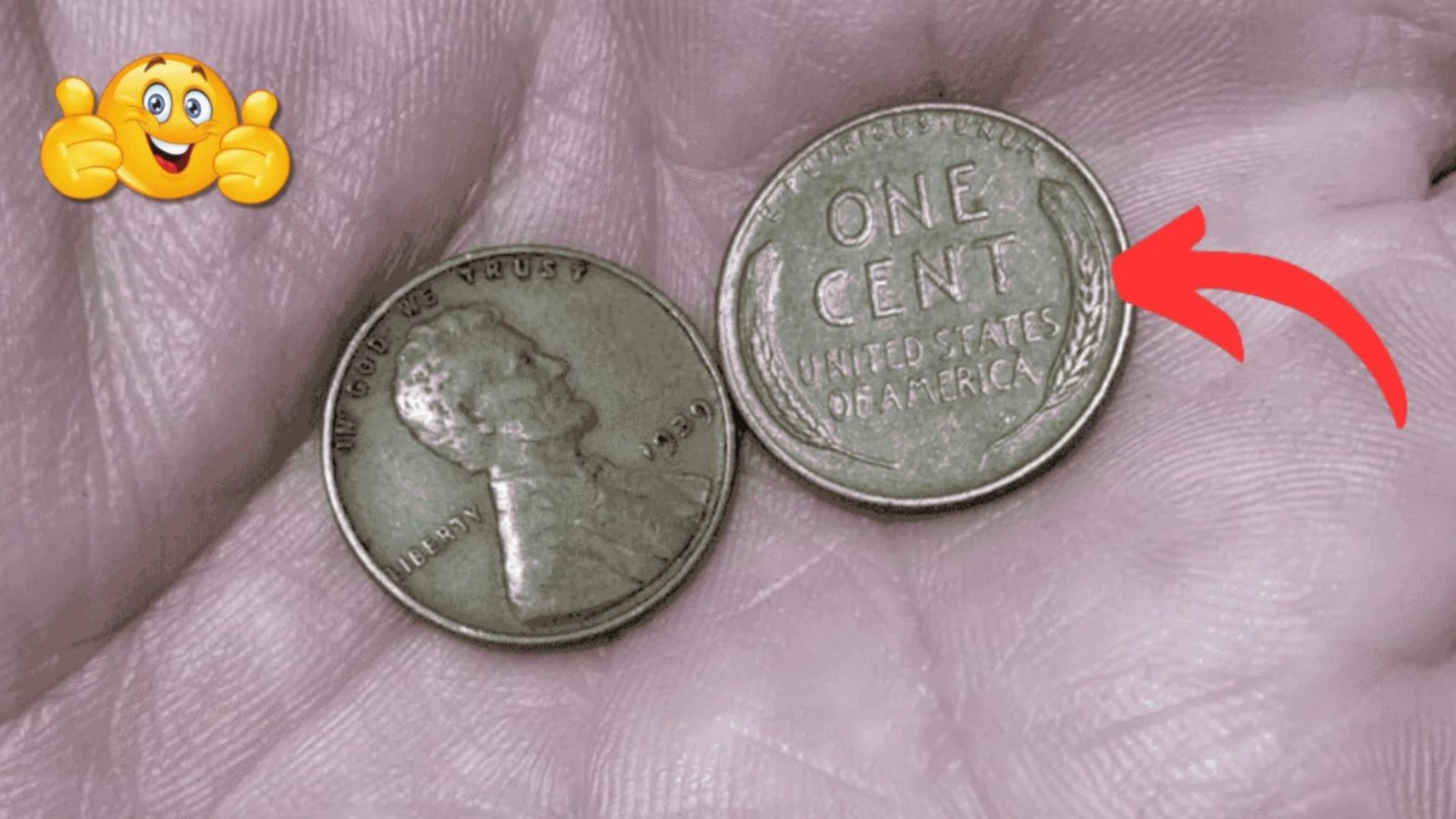The Lincoln Wheat Penny, a small coin with a big story, might be tucked away in your change jar, waiting to make you a millionaire. These iconic pennies, minted between 1909 and 1958, are more than just pocket change—they’re a piece of American history with some rare versions fetching up to $4.4 million at auctions. In this article, we’ll explore why these coins are so valuable, how to spot a rare one, and tips to start your treasure hunt today. Let’s dive into the world of the Lincoln Wheat Penny and uncover the secrets that could turn your loose change into a fortune.
What Is a Lincoln Wheat Penny?
The Lincoln Wheat Penny is a one-cent coin produced by the U.S. Mint from 1909 to 1958. Designed by Victor David Brenner, it was the first U.S. coin to feature a president’s portrait—Abraham Lincoln—on the front (obverse). The back (reverse) displays two wheat stalks, giving it the nickname “Wheat Penny.” These coins are highly collectible due to their historical significance and the rarity of certain editions.
Why Are Lincoln Wheat Pennies So Special?
- Historical Value: Introduced to celebrate Lincoln’s 100th birthday, these pennies mark a key moment in U.S. coin history.
- Rare Editions: Some years and mint marks are incredibly scarce, driving their value sky-high.
- Collector Demand: Coin enthusiasts, or numismatists, eagerly seek these pennies, especially those in pristine condition.
The Most Valuable Lincoln Wheat Pennies
Certain Lincoln Wheat Pennies have sold for jaw-dropping prices due to their rarity, condition, or unique errors. Below, we highlight the top-valued pennies that collectors dream of finding.
1943 Bronze Lincoln Wheat Penny – Up to $4.4 Million
In 1943, due to World War II, the U.S. Mint switched to steel pennies to save copper for the war effort. However, a few bronze pennies were accidentally minted, making them extremely rare. One such coin sold for $4.4 million in 2023, and experts believe only 10–15 exist.
- Key Features:
- Year: 1943
- Material: Bronze (not steel)
- Mint Marks: Philadelphia (no mark), Denver (D), or San Francisco (S)
- Value: $1.7 million–$4.4 million, depending on condition
1909-S VDB Lincoln Wheat Penny – Up to $2.2 Million
The 1909-S VDB penny is a collector’s gem due to its low mintage and the designer’s initials (VDB) on the reverse. Only 484,000 were made at the San Francisco Mint, and the initials were removed shortly after, making this coin a rare find.
- Key Features:
- Year: 1909
- Mint Mark: S (San Francisco)
- Designer Initials: VDB (Victor David Brenner)
- Value: $100,000–$2.2 million
1955 Doubled Die Lincoln Wheat Penny – Up to $125,000
This penny is famous for a minting error where the date and lettering appear doubled. The mistake happened during production, creating a unique, visually striking coin that collectors love.
- Key Features:
- Year: 1955
- Error: Doubled die on the obverse (date and text)
- Value: $20,000–$125,000
Other Notable Lincoln Wheat Pennies
| Year | Mint Mark | Special Feature | Estimated Value |
|---|---|---|---|
| 1914-D | Denver | Low mintage | $150,000–$300,000 |
| 1922 No D | Denver | Missing mint mark | $50,000–$100,000 |
| 1931-S | San Francisco | Low mintage | $10,000–$75,000 |
| 1944 Steel | Any | Steel instead of copper | $75,000–$375,000 |
How to Spot a Valuable Lincoln Wheat Penny
Finding a million-dollar Lincoln Wheat Penny in your pocket requires knowing what to look for. Here’s a step-by-step guide to identify a potential treasure.
Step 1: Check the Year
Focus on key years like 1909, 1914, 1922, 1931, 1943, 1944, or 1955. These years include rare varieties or errors that boost value.
Step 2: Look for the Mint Mark
The mint mark is a small letter on the front of the coin, below the date:
- No Mark: Philadelphia Mint
- D: Denver Mint
- S: San Francisco Mint
Rare coins like the 1909-S VDB or 1914-D are tied to specific mint marks.
Step 3: Inspect for Errors
Look for minting errors like doubled text (1955 Doubled Die) or unusual materials (1943 Bronze or 1944 Steel). Use a magnifying glass to spot these details.
Step 4: Assess Condition
Coin condition, or grade, greatly affects value. Coins are graded on a scale from Poor (P-1) to Perfect Mint State (MS-70). A well-preserved penny is worth far more than a worn one.
- Uncirculated: No wear, looks brand new.
- Extremely Fine: Slight wear, details sharp.
- Good: Worn but readable.
Step 5: Verify Authenticity
Counterfeit coins exist, so consult a professional appraiser or use services like PCGS (Professional Coin Grading Service) or NGC (Numismatic Guaranty Corporation) to authenticate your penny.
Where to Find Lincoln Wheat Pennies
You don’t need to dig through ancient ruins to find a Lincoln Wheat Penny. Here are the best places to start your search:
1. Your Own Change
Check your pocket change, piggy banks, or old jars. Many Wheat Pennies still circulate, especially common ones from the 1940s and 1950s.
2. Coin Rolls from Banks
Buy rolls of pennies from banks and search through them. You might uncover a rare gem hidden among common coins.
3. Estate Sales and Flea Markets
Older coin collections often surface at estate sales, garage sales, or flea markets. Look for jars of old coins or collections being sold by non-collectors.
4. Coin Shops and Auctions
Visit local coin shops or attend auctions to find Wheat Pennies. Online platforms like eBay or Heritage Auctions also list these coins, but beware of fakes.
5. Inherited Collections
If you’ve inherited a coin collection, check for Wheat Pennies. Family heirlooms often hide valuable coins.
Tips for Collecting Lincoln Wheat Pennies
Starting a Lincoln Wheat Penny collection is fun and potentially profitable. Here are some tips to get started:
- Learn the Basics: Study key dates, mint marks, and errors using guides like the “Red Book” (A Guide Book of United States Coins).
- Use Proper Tools: A magnifying glass, good lighting, and a coin loupe help you inspect details.
- Store Safely: Keep coins in protective holders or albums to prevent damage.
- Join a Community: Connect with coin clubs or online forums like CoinTalk to learn from other collectors.
- Be Patient: Finding a rare penny takes time, but the hunt is part of the fun.
Why Are Lincoln Wheat Pennies So Valuable?
The value of a Lincoln Wheat Penny comes from several factors:
- Rarity: Low mintage or errors make certain pennies scarce.
- Condition: Coins in mint condition fetch higher prices.
- Historical Significance: As one of the first portrait coins, they hold a special place in U.S. history.
- Collector Demand: High demand from numismatists drives prices up.
How to Sell Your Lincoln Wheat Penny
If you find a potentially valuable Lincoln Wheat Penny, here’s how to cash in:
- Get It Appraised: Visit a professional appraiser or send your coin to PCGS or NGC for grading and authentication.
- Choose a Selling Platform:
- Auctions: Heritage Auctions or Stack’s Bowers for high-value coins.
- Coin Dealers: Local or online dealers offer quick sales.
- Online Marketplaces: eBay or Etsy, but ensure buyer trust.
- Set a Realistic Price: Research recent sales of similar coins to gauge value.
- Protect Your Coin: Handle with care and store securely until sold.
Common Myths About Lincoln Wheat Pennies
Myth 1: All Wheat Pennies Are Worth Millions
Most Wheat Pennies are worth a few cents to a few dollars. Only specific rare varieties or errors fetch high prices.
Myth 2: You Need to Be an Expert to Find Valuable Coins
Anyone can start searching with basic knowledge and a keen eye. Resources are widely available to learn more.
Myth 3: Old Equals Valuable
Age alone doesn’t determine value. Condition, rarity, and demand matter more.
Fun Facts About Lincoln Wheat Pennies
- The 1909-S VDB caused a stir because some thought the designer’s initials were too prominent.
- Over 500 billion Wheat Pennies were minted, yet some are worth millions.
- The 1943 Bronze error happened because bronze planchets were accidentally left in minting machines.
Start Your Lincoln Wheat Penny Hunt Today!
A Lincoln Wheat Penny worth millions could be hiding in plain sight—in your wallet, a drawer, or an old coin collection. By learning to spot rare dates, mint marks, and errors, you can turn a simple penny into a life-changing discovery. Start checking your change, visit coin shops, or explore online marketplaces to join the exciting world of coin collecting. Who knows? Your next handful of change might hold a $4.4 million treasure!
Ready to Begin?
Grab a magnifying glass, check your pennies, and let the hunt for the Lincoln Wheat Penny begin. Share your finds with fellow collectors online or consult a professional to see if you’ve struck gold. Happy hunting!




